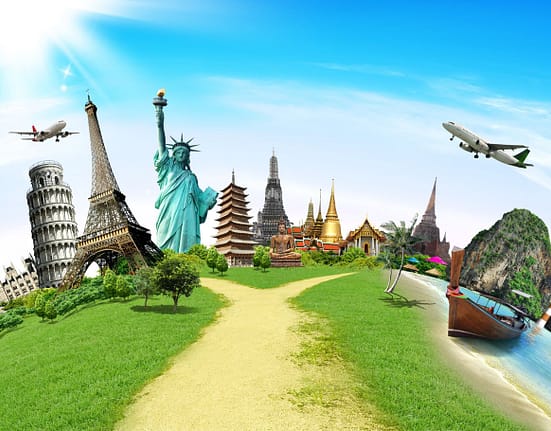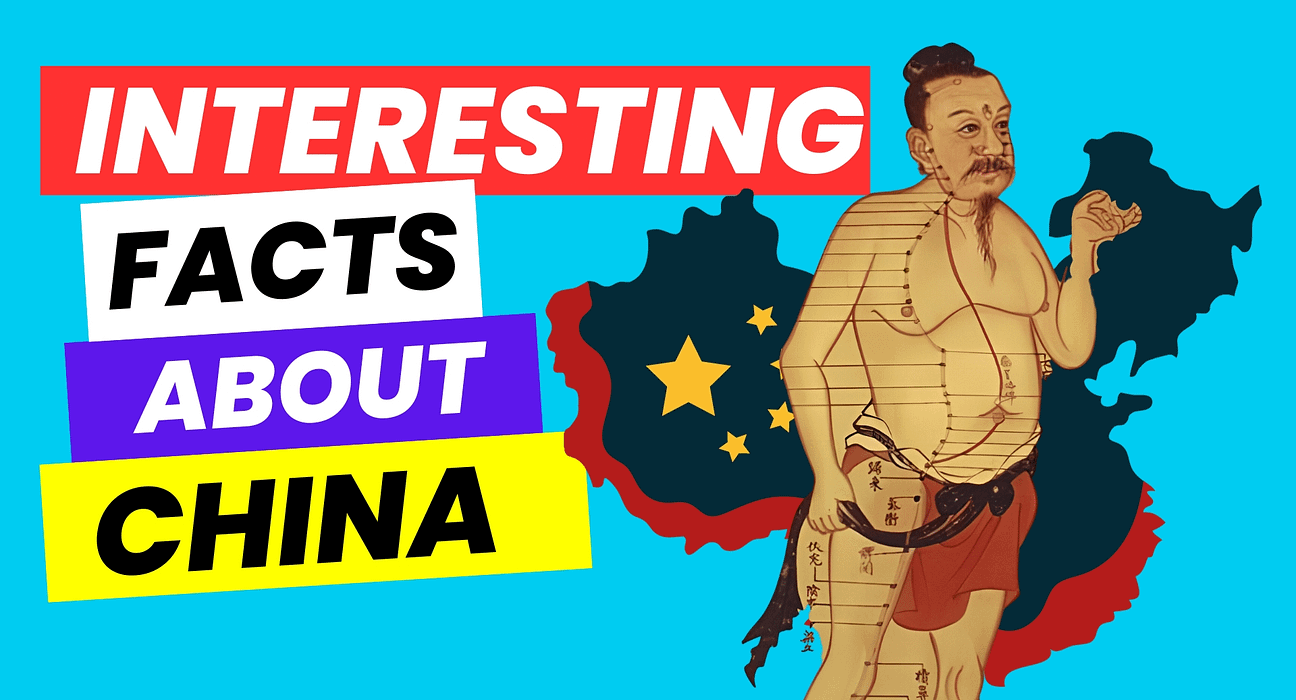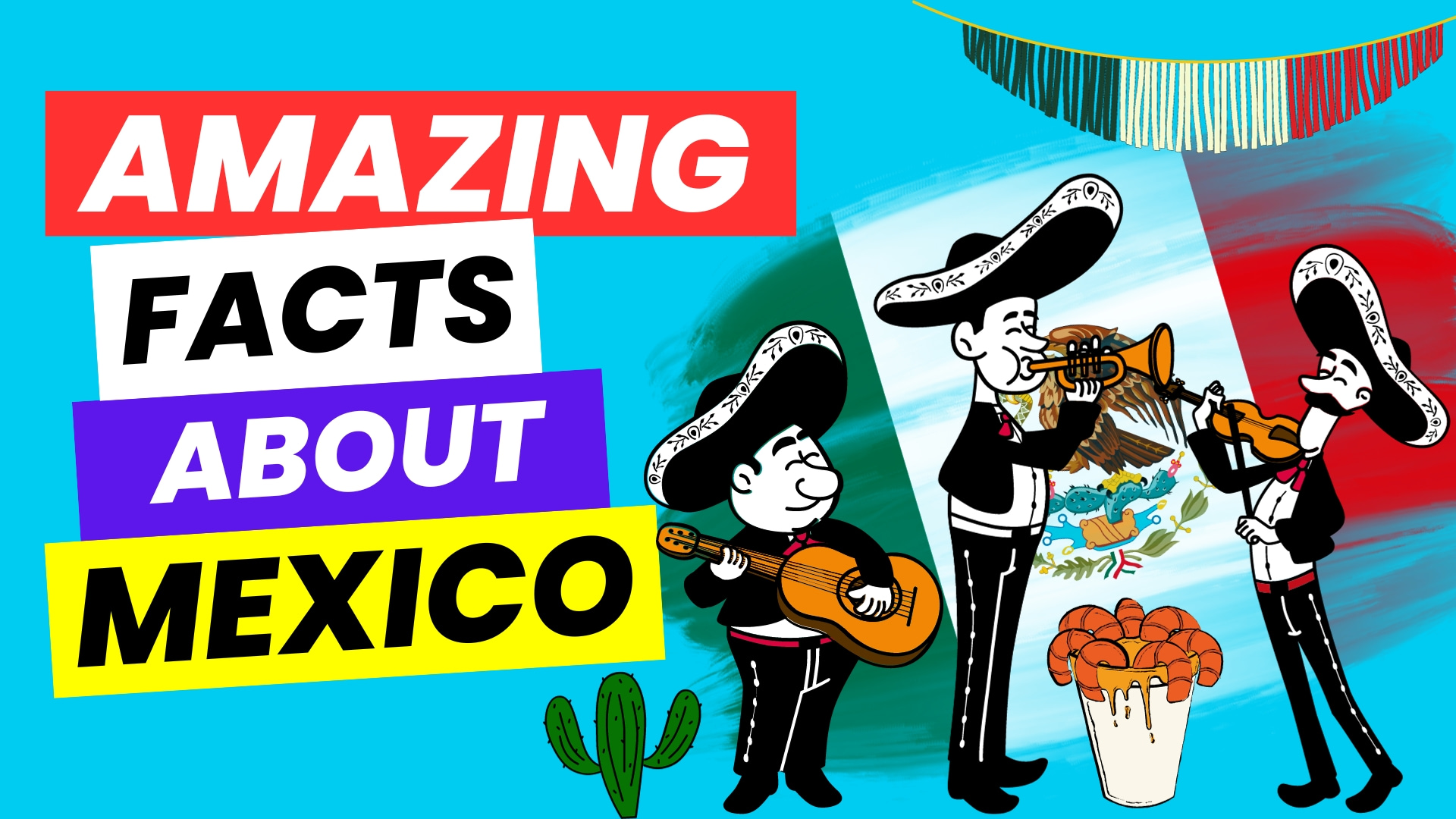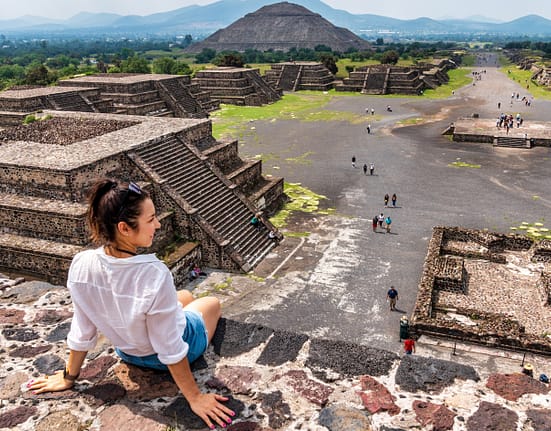Last updated on October 9th, 2024 at 08:27 pm
China, with its vast history, rich culture, and significant global influence, is a country that captivates people all over the world.
This blog post presents 50 interesting facts about China, spanning various categories such as history, culture, geography, and society.
These facts offer a glimpse into the unique tapestry that makes China one of the most fascinating countries on the planet.
History and Civilization
1. Longest Continuous Civilization: China is recognized as the world’s longest continuous civilization, with some historians tracing its origins back to 6000 B.C. This long history has seen the rise and fall of numerous dynasties and the development of a complex society.

2. Ancient Writing: The oldest form of Chinese written language can be traced to the Oracle Bone inscriptions, which were carved on tortoise shells and animal bones during the Shang dynasty (approximately 1600-1100 BC). This discovery marks a significant milestone in human communication.
3. First Imperial Dynasty: The Qin dynasty (221-206 BC) was the first to unify China under a centralized government. Conversely, the last imperial dynasty was the Qing dynasty (1644-1912), marking the end of imperial rule in China.
4. Great Leap Forward: This campaign, initiated by Mao Zedong in the late 1950s, aimed to rapidly transform China from an agrarian society into a socialist society through industrialization and collectivization. However, it led to one of the deadliest famines in history, resulting in an estimated 20-30 million deaths from starvation.
5. Mao Zedong’s Impact: Mao Zedong’s policies and campaigns resulted in up to 70 million peacetime deaths, more than any other leader in history, including Hitler and Stalin. His legacy remains deeply controversial within China and worldwide.
6. Terracotta Army: Discovered by farmers digging a well near Xi’an in 1974, the Terracotta Army consists of thousands of life-sized figures that were buried with China’s first emperor, Qin Shi Huang. This extraordinary archaeological find provides insight into ancient Chinese beliefs about the afterlife.
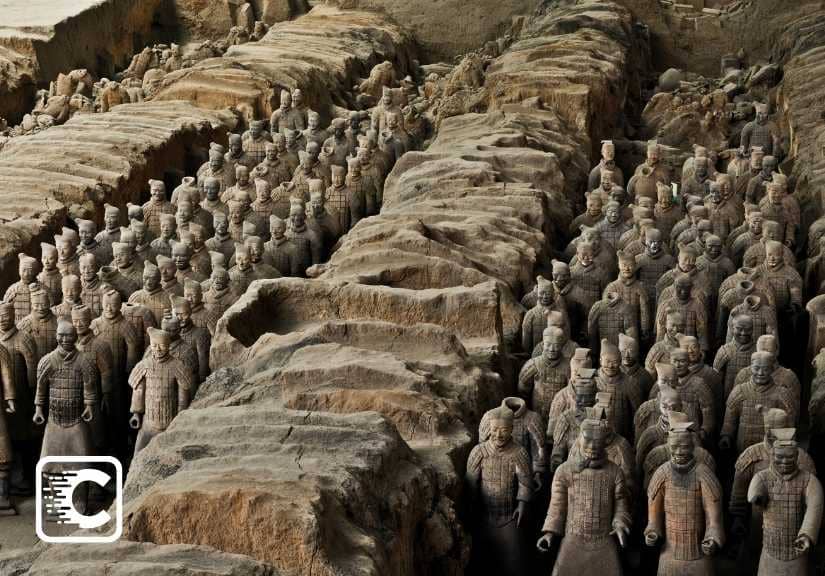
7. Tiananmen Square: Located in Beijing, Tiananmen Square is the largest city square in the world, covering an area of 440,000 square meters (880 meters by 500 meters). It is a site of historical significance and political demonstrations.
8. Great Wall of China: The Great Wall is not a single continuous wall but a series of walls and fortifications built by various dynasties over centuries to protect against invasions from nomadic tribes. Its total length stretches over 13,000 miles.
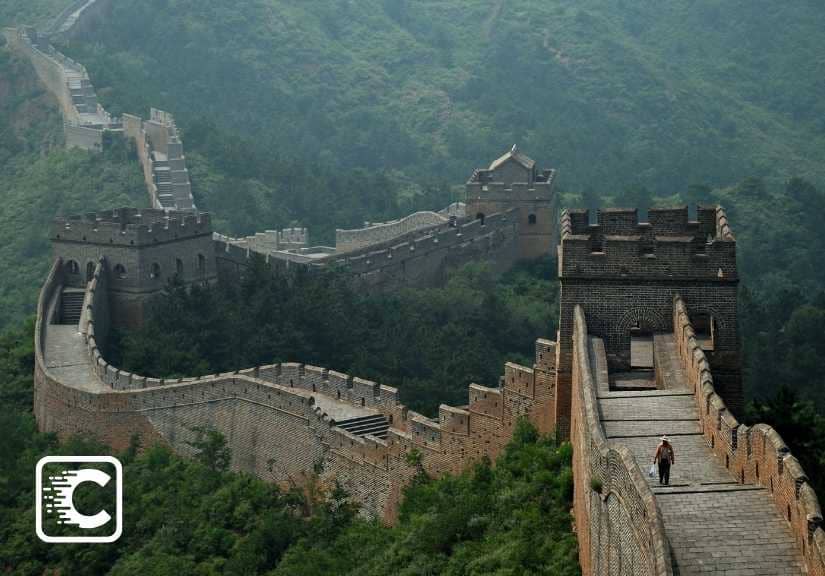
9. Paper Money: China was the first nation to use paper money during the Tang dynasty (618-907 AD), revolutionizing trade and commerce.
10. Silk Road: The Silk Road was not an actual road but rather a network of trade routes that connected China to Europe and other regions, facilitating trade in silk, spices, and other goods.
Language and Literature
11. Most Widely Spoken Language: Mandarin Chinese is the most widely spoken language globally, with approximately 850 million native speakers and around 1.34 billion total speakers worldwide.

12. Chinese Characters: Chinese characters are more than just letters; they are logograms that represent meanings rather than sounds. They have influenced various aspects of East Asian culture, including writing systems in Japan and Korea.
13. Classical Novels: The Four Great Classical Novels of Chinese literature—”Journey to the West,” “Water Margin,” “Romance of the Three Kingdoms,” and “Dream of the Red Chamber”—are regarded as masterpieces that have shaped Chinese literary tradition.
14. Calligraphy: Chinese calligraphy is an esteemed art form that emphasizes brush strokes and aesthetics, reflecting the writer’s personality and emotions. It shares techniques with traditional ink and wash painting.
15. Women’s Script: In ancient China, female peasants developed a unique script known as “Nüshu,” which was used primarily among women for communication and personal expression.
Culture and Traditions
16. Chinese Zodiac: The Chinese Zodiac consists of 12 animals, each representing a year in a repeating cycle. People’s personalities and fortunes are believed to be influenced by their zodiac sign.
17. Tea Culture: Tea has deep cultural significance in China, where it is not only a beverage but also an integral part of social interactions, ceremonies, and traditional medicine.

18. Fortune Cookies: Contrary to popular belief, fortune cookies are not a traditional Chinese custom but were invented in the United States by Chinese immigrants.
19. Cricket Fighting: Cricket fighting has been a popular pastime in China since the Tang Dynasty (618-907 AD). People breed crickets specifically for this traditional sport.
20. Kite Flying: Kite flying has a rich tradition in China that dates back nearly three thousand years. Kites are often used during festivals and celebrations.
21. Ping Pong: Table tennis, or ping pong, is considered the most popular amateur recreational sport in China, boasting about 300 million players across the nation.
22. Soccer: Known as cuju, soccer was invented in China over two thousand years ago. It involved kicking a leather ball into a net and is one of the oldest forms of football.
23. Traditional Chinese Medicine: Traditional Chinese Medicine (TCM) has been practiced for thousands of years and includes practices such as acupuncture, herbal medicine, and cupping therapy.
24. Confucianism, Buddhism, and Daoism: These three philosophies have significantly influenced Chinese culture and thought, promoting values such as harmony, morality, and balance between humanity and nature.
25. Foot-binding: This practice involved tightly binding young girls’ feet to modify their shape for aesthetic purposes. It was prevalent until the early 20th century but has since been abolished due to its harmful effects on women’s health.
Geography and Environment
26. Diverse Geography: China boasts one of the most diverse geographies in the world, featuring everything from lush rainforests to arid deserts and towering mountains to vast plains.
27. Altitude Difference: China has the greatest altitude variation on Earth, with Mount Everest (the world’s highest peak) located on its border with Nepal and numerous low-lying areas like the Yangtze River Basin.
28. Yangtze River: The Yangtze River is the longest river in Asia and the third longest in the world, playing a crucial role in China’s agriculture, industry, and transportation.
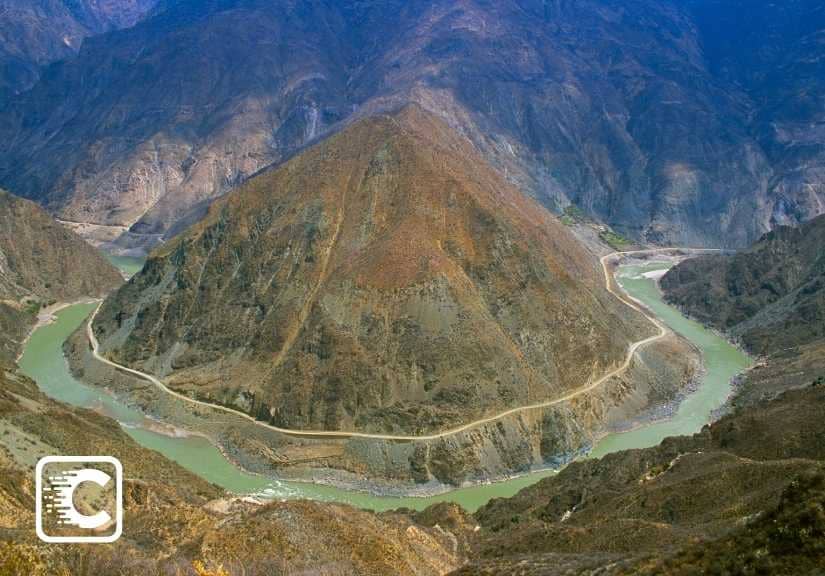
29. Yellow River: Often referred to as “China’s Sorrow,” the Yellow River is known as the cradle of Chinese civilization due to its historical significance in agriculture and development.
30. Pearl River Delta: The Pearl River Delta conurbation is recognized as the world’s largest urban area, known for its rapid economic development and bustling cities like Guangzhou and Shenzhen.
31. Third Largest Desert: The Taklamakan Desert in Xinjiang is known as one of the world’s largest deserts, characterized by its harsh climate and vast sand dunes.
32. Natural Grasslands: Approximately 40% of China’s land area is covered by natural grasslands, which are vital for livestock grazing and biodiversity.
33. Karst Limestone Landscape: China features half a million square kilometers of karst limestone landscapes known for their unique geological formations and breathtaking scenery.
34. Over 100 Cities: China has more than 100 cities with populations exceeding one million people, highlighting its status as one of the most urbanized countries globally. The one-child policy, which started in 1979 and ended in 2015, played a crucial role in shaping the country’s demographic landscape, significantly affecting family sizes and urban population growth.
Society and Ethnic Diversity
35. Ethnic Groups: China is home to 56 officially recognized ethnic groups, reflecting its rich cultural diversity beyond just Han Chinese culture.
36. Han Chinese: The Han Chinese make up about 92% of China’s population, making them the largest ethnic group in the country.
37. Zhuang People: The Zhuang people are one of China’s largest ethnic minorities, with a population of around 18 million located primarily in Guangxi Zhuang Autonomous Region.
38. Mongols: With around 6 million members residing in China today, Mongols maintain their distinct cultural identity while also living in Mongolia and Russia.
39. Manchu: The Manchu people number approximately 4.2 million in China today; they played a significant role during the Qing dynasty (1644-1912).
40. Multicultural Hub: China is a melting pot of cultures with over 200 distinct ethnic groups coexisting within its borders, contributing to its rich cultural heritage.
41. Urban-Rural Divide: A significant contrast exists between urban areas (such as Beijing and Shanghai) and rural regions in terms of economic development, infrastructure, education, and living standards.
42. Economic Disparity: Economic growth has not been evenly distributed across China; rural areas often experience poverty compared to wealthier urban centers.

43. North-South Divide: The Qin-Huai Line serves as an informal dividing line between northern and southern China, with notable differences in climate, cuisine, culture, and dialects between these regions.
44. Special Administrative Regions: Hong Kong and Macau function as Special Administrative Regions (SARs) of China with their own legal systems and economic structures distinct from mainland governance.
Innovations and Contributions
45. Four Great Inventions: Ancient China is credited with four great inventions—compass, gunpowder, papermaking, and printing—which have had profound impacts on global civilization.

46. Paper: Paper was invented during the Han dynasty (206 BC–220 AD), revolutionizing communication and record-keeping throughout history.
47. Bicycle Introduction: The bicycle was introduced to China in the late Qing dynasty (19th century) and has since become a popular means of transportation across cities.
48. Solar Terms: Ancient Chinese farmers developed a calendar based on solar terms to guide agricultural activities such as planting and harvesting according to seasonal changes.
49. Human Anatomy Knowledge: Chinese scholars made significant advancements in understanding human anatomy approximately 1400 years before European anatomists began their studies.
50. Foot-binding Revisited: While previously mentioned for its historical context regarding women’s health issues, foot-binding remains a controversial topic reflecting societal beauty standards throughout history.
These 50 interesting facts about China paint a broad picture of ancient China’s rich history, cultural diversity, geographical features, societal structure, innovations, and contributions to global civilization. Understanding these facets not only enhances our knowledge about this vast nation but also deepens our appreciation for its enduring influence on world history and culture.


